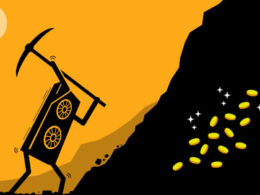
Assessing the market’s state can position the trader in a win-win situation. Analysts use candlestick patterns like the pin bar to determine the optimal trading period. These patterns are essential to their trading methods since they simplify predicting price fluctuations, increasing profit potential.
Interpreting Pin Bar Candlesticks
A particular kind of candlestick pattern called a pin bar uses price movements to indicate possible market turnarounds. Three key characteristics help to distinguish it: a small central “nose” that indicates a constrained price range, a “tail” that indicates price rejection, and a “body” that shows the open and closing prices. Pin bars are useful for determining when to enter and quit the market since these elements aid traders in anticipating future price fluctuations.
Bullish Pin Bar
A bullish pin bar, which indicates buyer dominance, signals a change in the market’s trend from a downward to an upward one. It can be identified by its short body, extended lower shadow, and little to no upper wick, which all point to price rejection following a decline. This pattern suggests that prices may climb therefore, traders should think about making a purchase.
Bearish Pin Bar
On the other hand, a bearish pin bar indicates a change in market direction from rising to dropping. It has a lengthy upper shadow and a small bottom shadow. This implies that selling pressure was able to prevent early attempts at price increases. It is a sign of an impending market correction and a possible selling opportunity.
Types of Pin Bars for Trading Decisions
There are four primary forms of pin bars in the family, and they all provide different market signals:
-
Hammer: This bullish pin bar indicates a potential change in trend from a downtrend to an uptrend and is a powerful purchasing signal due to its short upper body and long lower wick.
-
Shooting Star: Its lengthy upper wick, which depicts a price jump followed by a sharp decrease, suggests a possible trend reversal.
-
Inverted Hammer: This pattern, which is defined by a long upper wick following a price decline, suggests incoming buyer momentum and may indicate an unsuccessful effort at a price rally.
-
Hanging Man: Like the hammer, but following an ascent, this indicator may point to a potential shift in market sentiment towards bearishness.
Trading with Pin Bar Candlesticks
Pin bar candlesticks are a flexible indicator that may be used in the markets for cryptocurrencies, forex, stocks, indexes, and commodities. To avoid losses, traders should use caution when separating true pin bar patterns from false ones. One of the most important indicators of the intensity of market mood and the probable direction of price movements is the length of the wick on a pin bar.
When using bullish pin bar methods, look for candles that are close to support levels. Then, position a stop loss below the pin bar and a buy-stop order above it. Maintain a trading risk of no more than 1.5% and aim for a profit target that is twice the magnitude of your risk.
On the other hand, if you see bearish pin bars, look for them close to resistance levels. Then, use identical risk management techniques to place a sell-stop order below the pin bar and a stop loss above it.
When trading based on pin bar signals, traders can enter at market price, wait for the pin bar to close, enter at a 50% retracement, or use an on-stop entry. Verifying the pin bar pattern is crucial prior to finalising the trade.
Identifying Inside Bar and Pin Bar Trading Patterns
In trading, the pin bar and inside bar combo patterns are essential price movement tactics. An inside bar indicates consolidation and the possibility of a breakout, while a pin bar indicates a potential price reversal brought on by price rejection. When these indications are combined, a “pin bar combo” or “inside bar – pin bar combo” is produced, which suggests an effective trade situation. This combination usually consists of a pin bar followed by an inside bar that forms in the previous pin bar’s high-to-low range. This combination is a powerful trade signal on daily charts, particularly when trading close to important levels or in markets that are trending.
Benefits and Drawbacks
Pin bar setups are known for their ability to clearly show reversals, which increases effectiveness, particularly when they are close to important support or resistance levels. Because of its versatility and visibility across all liquid capital markets and timeframes, pin bars are a favourite option among traders.
Pin bars do have some restrictions, though. They can provide misleading signals in unpredictable conditions and are unable to predict future moves in the market; they can only offer prospective reversal signs without indicating the intensity or direction of the trend. Their indications may be less dependable in sideways or range-bound markets, which could decrease their impact.
Final Remarks
Pin bars are valuable to traders because they can indicate upcoming changes in price. However, because they frequently show up on charts, it’s important to distinguish between real and fake signals and get confirmation before making a trade. Pin bar patterns can be used to help traders make well-informed decisions and increase their success in trending markets by combining them with additional indicators and thorough study.
Image source: Shutterstock
. . .
Tags
Source link







